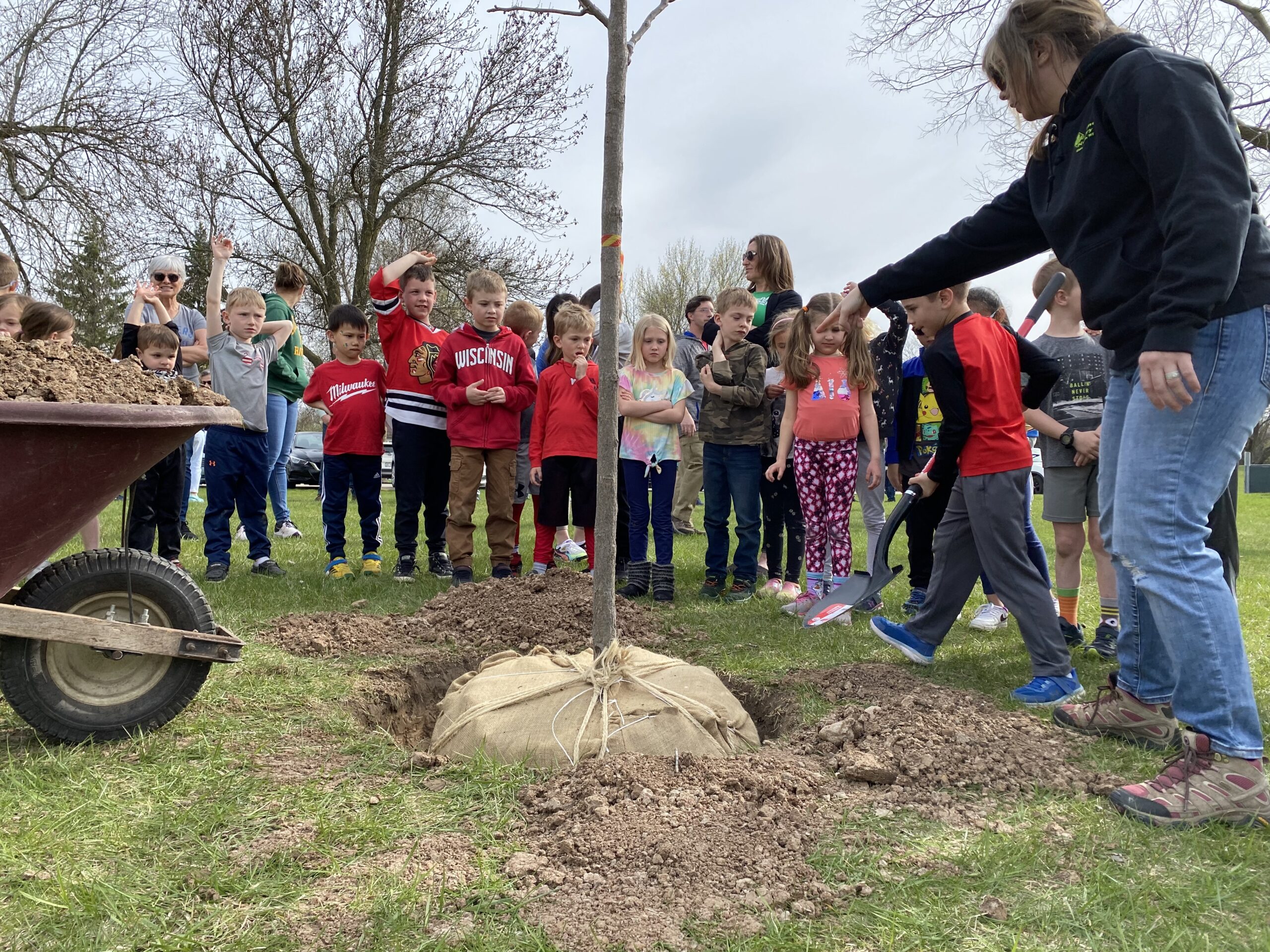Wisconsin News
There’s a plan in Wisconsin to plant 100M trees before 2030. Here’s how you can help.

In April this year, Gov. Tony Evers promised a global climate initiative that Wisconsin will plant 100 million trees in the state by 2030.
To Wisconsin’s Chief State Forester Heather Berklund, this promise acknowledges tree planting as “one of the best nature based solutions to our changing climate.”
Berklund said achieving this goal requires statewide collaboration — not just efforts from the Department of Natural Resources.
“This is a call to action for the entire state of Wisconsin,” Berklund told WPR’s “Wisconsin Today.”
The DNR has formal agreements with several organizations, including Alliant Energy, Milwaukee Metropolitan Sewerage District and the Girl Scouts. But there is also ample opportunity for individuals and volunteer groups to contribute to the statewide goal.
Berklund said avoiding invasive, non-native trees is important, and ensuring the trees planted are beneficial for the region is a must.
“Track(ing) and (taking) inventory of our urban species has been really important and valuable,” Berklund said, referring to a set of maps that documents Wisconsin’s trees.
Berklund said these publicly available maps are “critical for future planning and making sure that we have a healthy resource.”
But you don’t have to know how to read or use these maps to help. Berklund said the DNR can connect people to experts if they want help accessing resources, inventories and collaborative opportunities.
Berklund discussed biodiversity, funding and anticipated challenges with “Wisconsin Today.”
The following interview was edited for clarity and brevity.
Kate Archer Kent: Is Wisconsin’s goal realistic?
Heather Berklund: It is a lofty goal. However, we’ve been able to achieve over 40 percent of that goal in our tree planting efforts in rural areas since 2021.
KAK: What is required to orchestrate this many trees going into the ground?
HB: This isn’t just a DNR Division of Forestry initiative.
It really is working with many partners, acknowledging this pledge and setting up some agreements that they are dedicated to.
KAK: Do Wisconsin nurseries have enough saplings to support this effort, or have they had to ramp things up?
HB: The state of Wisconsin has a nursery in Boscobel where many of the seedlings come from. Also, private nurseries help with the seedling orders. Nearly 6.5 million seedlings were supplied this past year, but we estimate about 3 million or so came from private nurseries.
It is definitely a statewide collaboration to help make this achievement.
KAK: Is it a challenge to decide where these trees go and why, so that you can get the desired effect by 2030?
HB: It can be, definitely. When you’re driving in a city area, sometimes trees are planted in the least desirable places, and then they have to be removed or they cause infrastructure damage.
Having a plan in action with the community is really important so that you are planting the correct species of tree in the correct location so that it will thrive and be beneficial and maintained for years to come.
KAK: This is a global initiative coming from the World Economic Forum. How are the newly planted saplings funded?
HB: The Division of Forestry does not have an extra funding source for this specific initiative. We are receiving some federal funding for a paid coordinator position.
There are a few opportunities where landowners can get some additional funding to do some of these efforts.
There is some federal funding for tree planting initiatives for landowners who want to purchase some trees to plant in more of a rural setting through programs like the Natural Resources Conservation Service.
The UW Extension’s horticulture program can connect landowners with local conservation districts that may have opportunities for purchasing native trees in the appropriate area.
The state of Wisconsin also has a cost share program, the Wisconsin Forest Landowner Grant Program, for tree planting and site preparation funding.
KAK: How does Wisconsin’s pledge of 100 million trees compare to other pledges?
HB: Wisconsin has taken a much more aggressive approach. We definitely are on the map as an important and valuable state that a lot of other states are actually looking towards, watching how we’re achieving our goals and following suit.
We are, I believe, the only state that has a governor that sits on the national initiative.
KAK: What specific challenges or barriers do you anticipate the DNR will face moving forward?
HB: Having that support, not just as a DNR initiative, but from other organizations and communities who recognize that importance and want to collaborate on it.
I think there’s always a funding piece that needs to be recognized in not only having the funding to plant trees, but also to maintain them. That’s always critical for future success.


